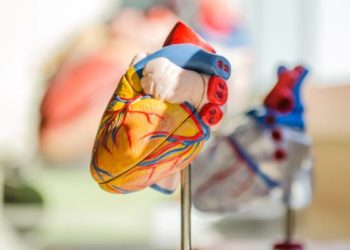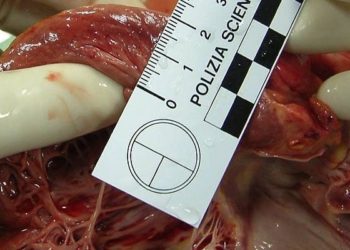Cardiac mortality paradoxically lower during times of national cardiology conferences
1. In a cohort of older Medicare beneficiaries who required acute cardiac care during times of major national cardiology conferences, high-risk patients admitted with heart failure and cardiac arrest to teaching hospitals had lower short-term mortality rates during times of conferences compared to non-conference times. The mortality amongst patients with acute myocardial infarctions was not different between the two groups
2. The utilization of health care was not affected by the conference times, except for percutaneous coronary interventions, the rate for which was lower during conference times for high-risk patients at teaching hospitals. Mortality outcomes were not affected in this group.
Evidence Rating Level: 2 (Good)
Study Rundown: Thousands of physicians attend major conferences each year, which leaves a different composition of physicians to care for patients at hospitals. Theoretically, this could affect patient care if the appropriate physicians are not present. This study, which examined the short-term outcomes of patients experiencing acute cardiac problems at teaching and non-teaching hospitals, was done to identify if outcomes were affected during times of major cardiology conferences. Surprisingly, the results of the study suggested that high-risk patients admitted with heart failure and cardiac arrest to teaching hospitals had lower short-term mortality rates during times of cardiology conferences compared to non-conference times. The mortality amongst patients with acute myocardial infarctions was not different between the two groups. The utilization of health care was not affected by the conference times, except for percutaneous coronary interventions, the rate for which was lower during conference times for high-risk patients at teaching hospitals. The outcomes were not affected in this group.
One of the strengths of the study was in the study design, which specifically examined outcomes with one variable: number of cardiologists present. However, one of the problems is that the outcomes of those suffering from heart failure or cardiac arrest may not be dependent on care delivered by cardiologists at all since general medicine and other medical specialties are often caring for those patients. Also, a reason for the paradoxical outcomes is not really derived from the results, which affects the plausibility of the results.
Click to read the study, published today in JAMA Internal Medicine
Relevant Reading: Off-hour presentation and outcomes in patients with acute myocardial infarction: systematic review and meta-analysis
In-Depth [retrospective cohort]: The study population consisted of Medicare beneficiaries 65 years or older who were admitted to the hospital between 2002 and 2011 with a primary diagnosis of acute myocardial infarction (AMI), heart failure, or cardiac arrest. The conferences considered were the American College of Cardiology (ACC) and American Heart Association (AHA) national meetings. The patients were separated based on admission dates during the time of the two meetings (exposure group) compared to non-meeting times (control group). Major teaching hospitals (identified based on number of residents present) were separated from non-teaching hospitals. The primary outcome was risk-adjusted, all-cause 30-day mortality in the exposure and control groups. Secondary outcomes included time to various invasive cardiac procedures based on initial diagnosis, length of stay, and hospital charges.
After adjustments, high-risk patients with cardiac arrest or heart failure admitted to teaching hospitals in the exposure group had a significantly lower 30-day mortality rate compared to the control group (heart failure, 17.5% vs. 24.8%, P<0.001; cardiac arrest, 59.1% vs. 69.4%, P=0.01). There was no such difference identified for patients admitted for AMI. No difference was identified for any low-risk patients, or among high- or low-risk patients admitted to a non-teaching hospital. In regards to medical utilization, length of stay, and hospital charges, only a difference in PCI for high-risk AMI at teaching hospitals was identified. The exposure group had lower PCI rates than the control group (20.8% vs. 28.2%, P=0.02). However, as stated above, outcomes were not affected despite this difference.
More from this author: Active smoking cessation intervention may provide tangible results [Project CLIQ], Reperfusion therapy may be suboptimal for STEMIs requiring transfers, Statin therapy does not prevent osteoporotic fractures [JUPITER trial], Basic life support associated with greater survival in cardiac arrest, Cardiac biomarkers unnecessarily ordered in emergency departments
Image: PD
©2014 2 Minute Medicine, Inc. All rights reserved. No works may be reproduced without expressed written consent from 2 Minute Medicine, Inc. No article should be construed as medical advice and is not intended as such by the authors, editors, staff or by 2 Minute Medicine, Inc.







